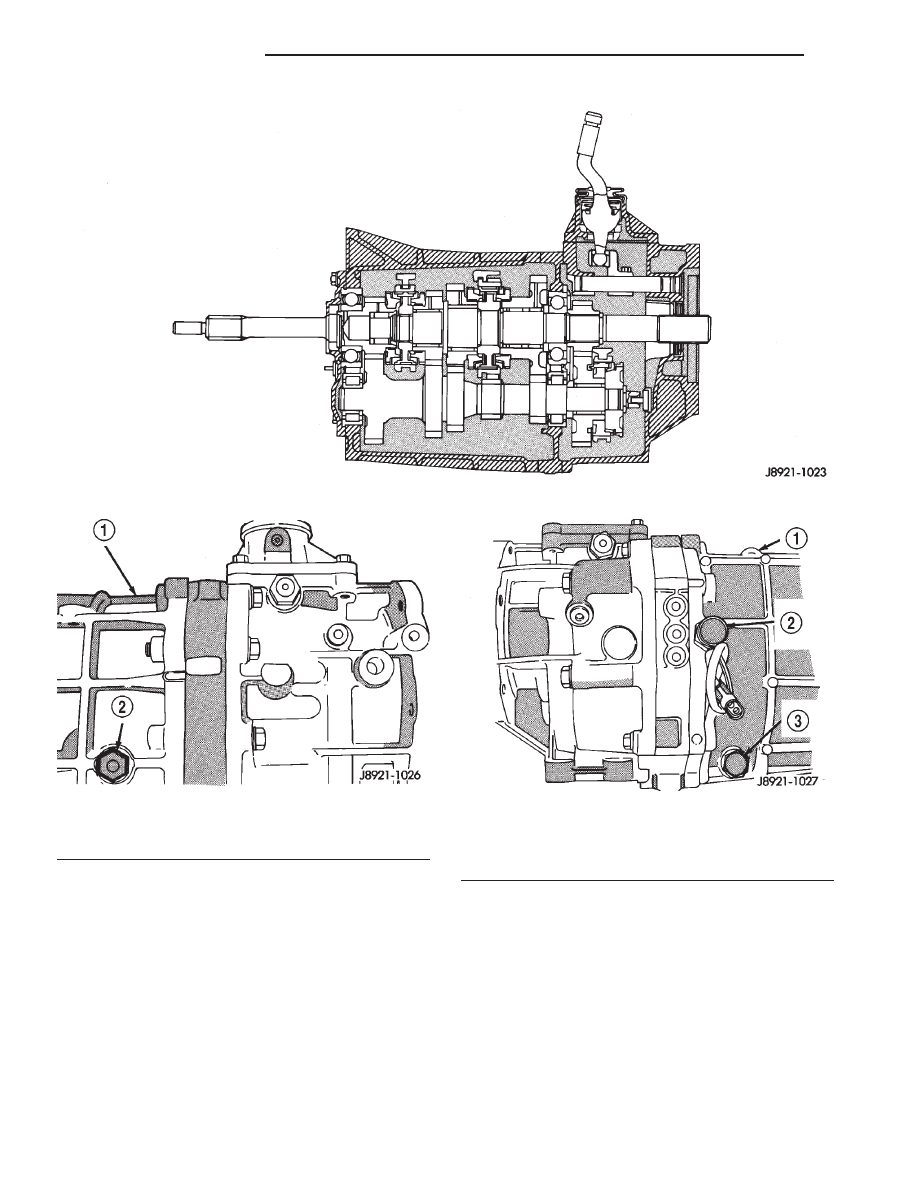Dodge Dakota (R1). Manual - part 740

Fig. 1 AX15 Manual Transmission
Fig. 2 Fill Plug Location
1 - TRANSMISSION CASE
2 - FILL PLUG
Fig. 3 Drain Plug Location
1 - TRANSMISSION CASE
2 - BACKUP LIGHT SWITCH
3 - DRAIN PLUG
21a - 2
MANUAL - AX15
R1
MANUAL - AX15 (Continued)